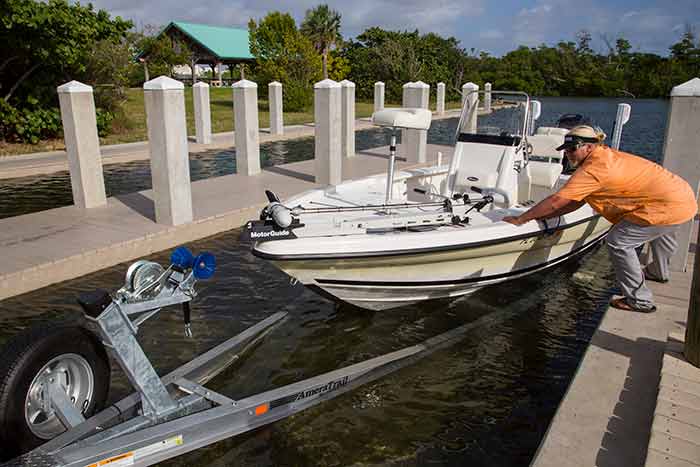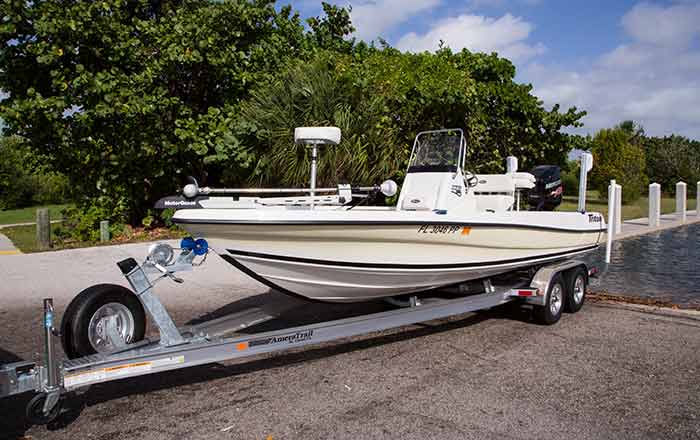Advertisement
After a great day on the water, now's not the time to mess things up.
1. Drop And Go
Drop the driver of the tow vehicle off at the end of the dock to go retrieve the rig. Idle out away from the ramp. Or, if you won't be impeding others, pull alongside the far end of the dock. Meanwhile, attach a line to a bow cleat, and one to the stern — especially important if there is wind or current.

Ready to go home? Make sure the driver has backed down far enough to allow the boat to easily glide up to the farthest forward roller or the top of the bunks. (Photo: Billy Black)
2. Evacuate
When you see your rig pulling into position to back down the ramp, get everyone off the boat except the operator. Leave the gear aboard; that's for later. Hold the lines to keep the boat in position just beyond the reach of the trailer. Signal the vehicle driver when the trailer has backed far enough down the ramp for loading. He/she should put the vehicle in park, engage the parking brake, and leave the engine running.

Floating is easier than winching! Let the boat drift forward till it catches on the front of the bunks. (Photo: Billy Black)
3. Drag Or Drive
Many boats can be floated most of the way onto the trailer without much effort. But if your boat is large or susceptible to being pushed about by crosswinds, you may have more control if you SLOWLY drive it on to the trailer. Do not apply the throttle to "power load," as this practice washes away the material under the end of the ramp leading to it eventually collapsing.

If the angle of the ramp allows it, try to use the trailer to keep your feet dry. Ramps are notoriously slippery.
4. Winch It On
At this point, either you, or the driver needs to position themselves on the trailer tongue to attach the winch strap or cable to the bow eye of the boat, and crank the boat fully onto the trailer. When the bow is snug against the winch post, attach the safety chain.
5. Pull Up Slowly
Have the driver pull slowly up the ramp, pausing to allow you to raise the outboard or sterndrive if necessary. Follow the tow vehicle to the loading zone.

Once you've loaded the boat, move it to the staging area to free the ramp for the next boater. (Photo: Billy Black)

Don't forget where you put the plug! (Photo: Billy Black)
6. Unload & Drain
Pull the plug and drain any livewells. You want any water in the boat to end up back in the same body of water it came from to minimize the risk of transferring invasive species. Do this first so there's plenty of time for the boat to drain while you load your gear into the tow vehicle, attach transom tie-downs, lower any bimini or antennas, or anything else that needs to happen before the boat can hit the highway. Don't forget to plug in the trailer lights!
